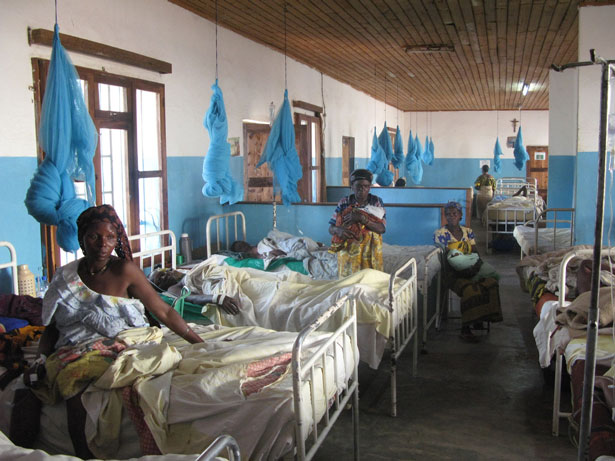-
Woman-Centered Maternity Care, Family Planning, and HIV: Principles for Rights-Based Integration
July 15, 2013 By Jacob Glass
Despite increases in the availability of maternal health care across Nigeria, maternal mortality rates remain high, averaging 630 per 100,000 live births in 2010, compared to the world average of 210. “This is data we are not proud of,” said Philippa Momah, board director of Nigeria’s White Ribbon Alliance, at the Wilson Center. “We believe that one of the issues is the way health care providers treat our women. This may be causing a 20 percent drop-out rate in the health care system.” [Video Below]
Momah joined a panel of experts on June 11 to discuss the importance of “woman-centered” care in maternal health, family planning, and HIV initiatives not only in Nigeria, but across the developing world.
Where Is the Demand?
Much like in Nigeria, where women’s participation in the health care system has remained low even after the government put in place free family planning services and commodities, Wuleta Betemariam, project director for the Last Ten Kilometers Project (L10K), said that Ethiopian women often reject formal maternal health services, even when free. “We have a 10 percent facility delivery rate, which means that 9 out of 10 women in Ethiopia are still delivering at home,” she said. This is important because “institutional delivery is a key factor in decreasing maternal mortality.”
Louise Dann, a partnerships specialist with the United Nations Population Fund, said “woman-centered” care is a critical missing piece to convincing women to come to facilities. A country can invest millions to increase access, she said, but if women do not want to use those services, there is no point.
The problem is “poor client-provider interactions, and keeping consumers in the dark about what their rights are,” said Momah. In surveying women about common interactions with the formal health care system, they found that many reported being slapped for screaming during childbirth, left without nurses or family during labor, deprived of basic privacy measures such as curtains, treated differently based on their physical appearance, and barred from exercising customary practices, Betemariam said.
“Sometimes when a woman gets in trouble by a health worker during the first visit, she prefers not to go back again,” said Betemariam. One L10K participant said, “I wouldn’t like to be treated or even touched by a health worker who mistreats me. Under such circumstances, I prefer to stay at home.”
“Women are discouraged by patronizing government health care services, and so they resort to traditional health care,” said Momah. “This puts their lives at risk and makes progress on maternal health and child [health] interventions very slow.”
“Invest In the Future of Our Country”
Governments and NGOs have done a good job spreading the message about the importance of modern maternal health, family planning, and HIV services and facilities. However, to gain the trust of patients and increase return rates, “it is also important that we consider…how women exit the system,” said Mary Beth Hastings, vice president of the Center for Health and Gender Equity.
“We have to take these exit points seriously because it undermines all that we are trying to achieve,” she said. “The negative experiences that a woman has [with] hospital employees drives her feelings of the entire medical system, not just the maternal health provider.”
The White Ribbon Alliance works to improve the quality of care provided to Nigerian women by training medical staff on the “ethics and etiquette” of health care work. “Health workers should see their jobs as a call to service,” said Momah. “We have started a three-year campaign to advocate for policymakers and health workers to provide respectful maternity care to all women.” To date, the White Ribbon Alliance has trained 85 percent of rural health workers in Nigeria in right-based maternity care.
Similarly, the Last Ten Kilometers Project has worked since 2007 to strengthen interactions between Ethiopian women and their primary health care units. “Project workers convene community members and health workers to identify barriers to improving quality care and train providers to improve interpersonal skills,” Betemariam said. Working in Ethiopia’s four most populous regions, she said they have reached an estimated 3.5 million women of reproductive age.
Addressing the gaps in maternal health care could also increase the uptake of other health services. Whether maternal health, HIV, or family planning, a woman’s initial experience of formalized health care affects her long-term participation in the sector, said Hastings. “This conversation is a helpful step forward for a woman-centered approach to integrated health services, because we all have a stake in making sure women are cared for in a human way,” she said.
“When we do the right thing for our women, we invest in the future of our country,” concluded Momah.
Event Resources:
Photo Credit: “Tosamaganga Hospital: Maternity Ward,” courtesy of Medici con l’Africa Cuamm.
 A Publication of the Stimson Center.
A Publication of the Stimson Center.



